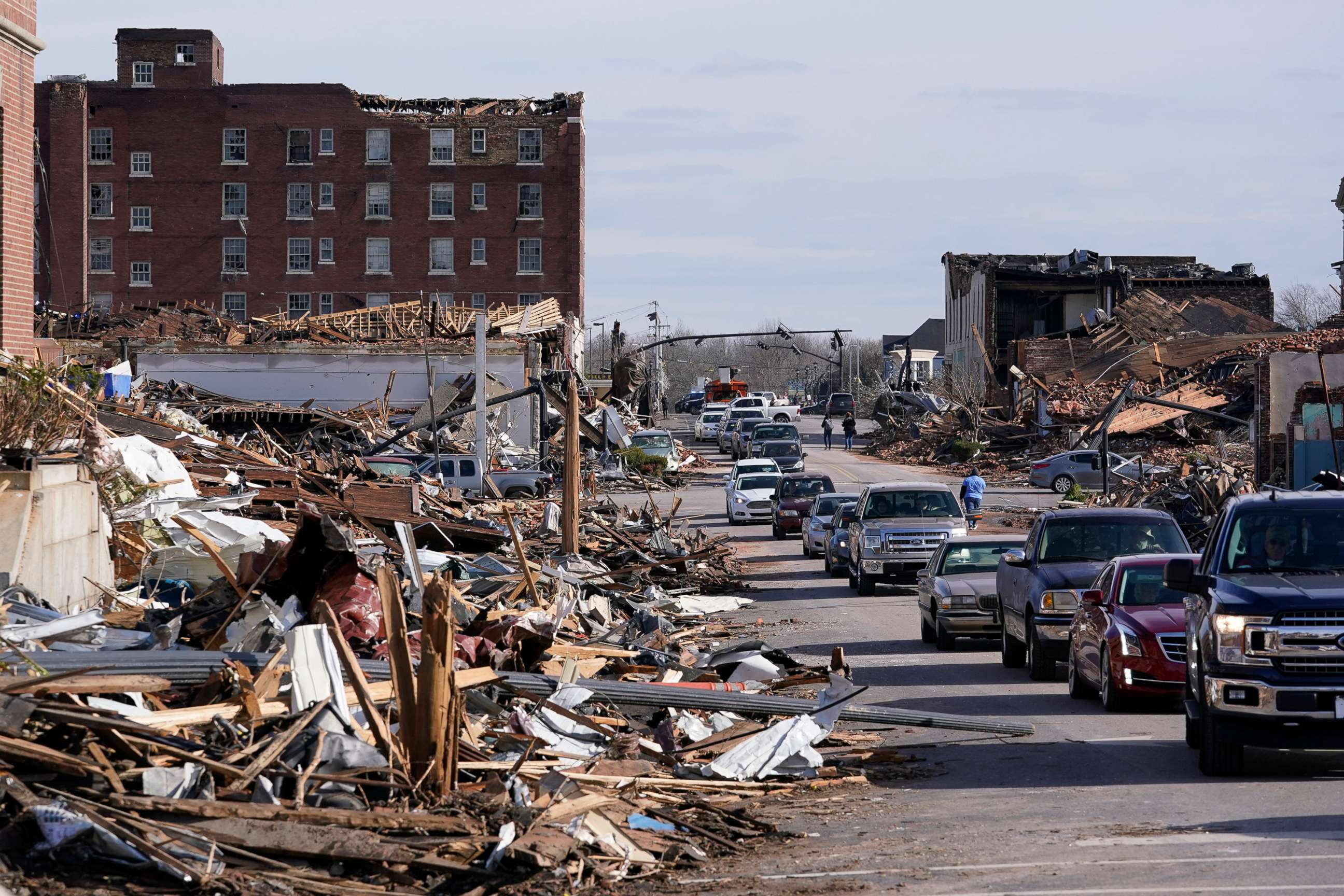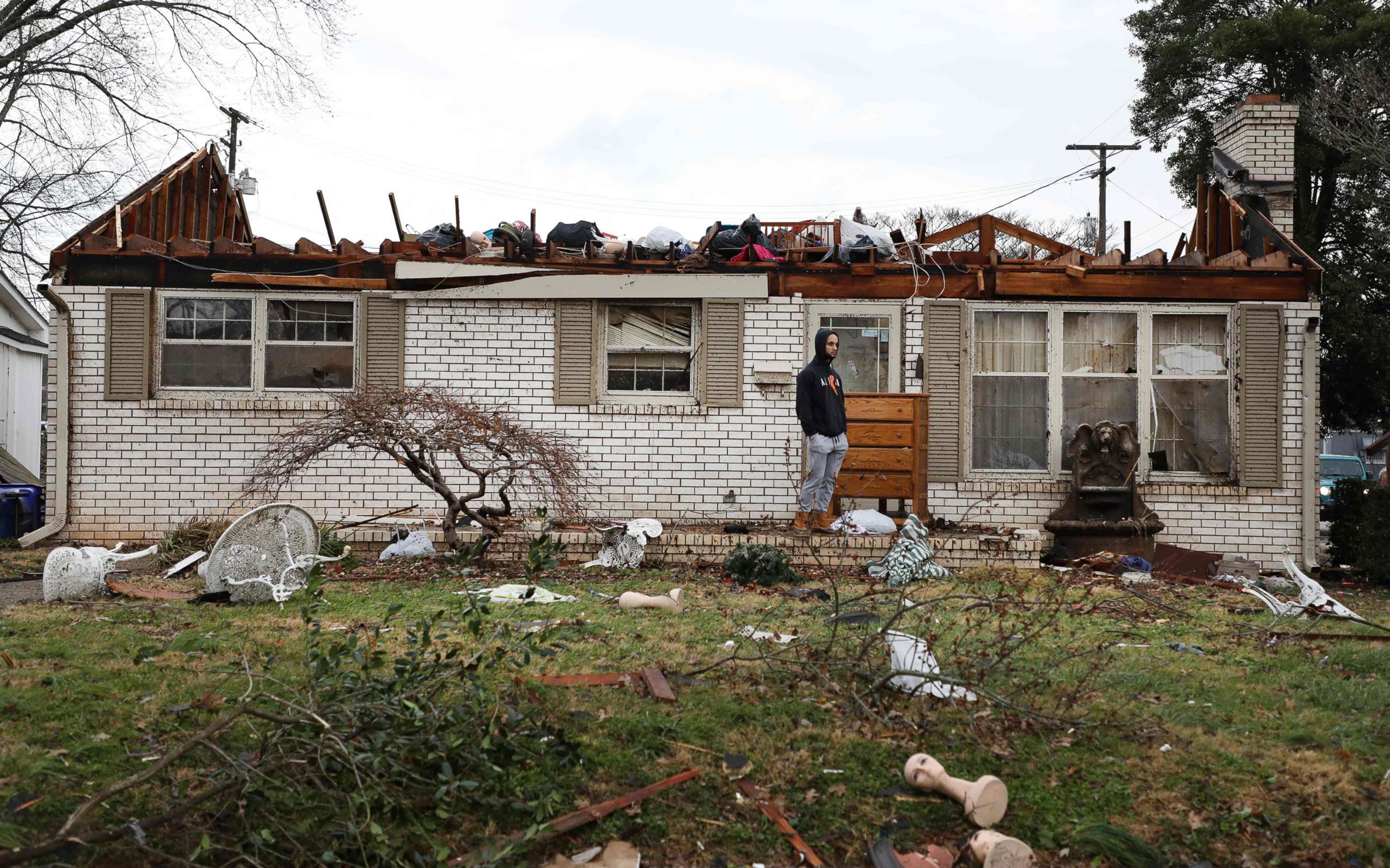Tips on how to stay safe from a tornado after 40 reported in 9 states
December is usually a quiet month for tornadoes.
Thousands of residents across the U.S. have been in the path of at least 40 reported tornadoes that ripped through nine states overnight.
According to the Associated Press, 36 people have were killed across five states, 22 of them in Kentucky alone, in the storms, during what's typically a quiet month for tornadoes.
FEMA advised residents from east-central Mississippi to extreme southwestern Virginia to stay vigilant as the storm system moved east.
It's important to be prepared and act quickly in the event of a tornado. Here are some tips on how to stay safe when a twister occurs:
Heed the weather alerts
Tornadoes can strike with little to no warning and can change direction at any moment.
A tornado watch indicates that weather conditions in the area can allow a twister to form, while a tornado warning means that a tornado was sighted in the area and could be headed toward you. Local radio and television stations will provide updates, and the National Weather Service radio station gives 24/7 updates on weather conditions.
Have two ways to get the warning, with one being a battery-powered NOAA weather radio.

Look up at the sky
A dark, often green sky can be a tell on weather a tornado is coming, according to FEMA.
In addition, large hail and large, dark and low-lying clouds are also signs a tornado may be imminent, as well as strong winds with roars that sound similar to a freight train.
Finding shelter
Seek refuge in a small, interior room without windows on the lowest level of a home, should a safe room not be available, according to FEMA.
Take additional cover by shielding your head, neck and arms, and putting materials such as furniture and blankets around you.
Having helmets in your tornado shelter is key. Also make sure to have a safety whistle, to help people locate you if you are under debris, and extra shoes with thick soles to avoid injury post-storm if trudging through debris. People are often barefoot during nocturnal tornadoes.
Do not try to outrun a tornado. If you're in a car or outdoors and cannot get to a building, head to the lowest ground possible, such as a ditch or land depression, cover your head and neck with your arms and cover your body with a coat or blanket, if available.
Also stay on the lookout for flying debris.

After a tornado
If you are trapped under debris, cover your mouth with a cloth or mask if possible to avoid breathing in dust. Try to send a text for help, but instead of yelling, bang on a pipe or wall or use a whistle, according to FEMA.
The Centers for Disease Control and Prevention recommends checking yourself and your family for injuries and seeking medical attention immediately, if necessary.
During cleanup after a tornado, wear thick-soled shoes, long pants and work gloves. Stay away from downed power lines and be careful when walking around or through any damaged structures that may be unstable.
In addition, save phone calls for emergencies, as phone systems are often down or busy after a disaster.
ABC News' Lauren Effron, Max Golembo and Ginger Zee contributed to this report.




